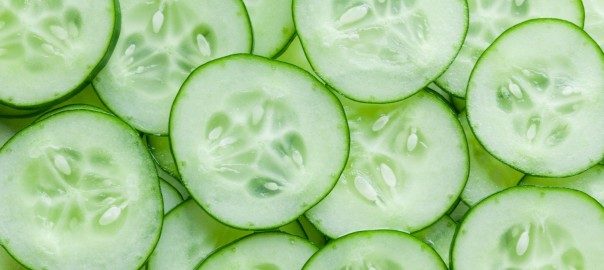When shopping at your local farmers market this summer with your EBT SNAP benefits, impress your friends and family with your cucumber knowledge. Read below to become an expert on everything cucumbers, from preparing them to storing them.
What is a Cucumber?
Cucumbers are the fourth most widely cultivated “vegetable” in the world. Technically, cucumbers are fruits because they grow from the ovaries of flowering plants, but most people still refer to them as vegetables. Cucumbers can come in a variety of shapes, colors and sizes. They fall into two main categories: slicing cucumbers and pickling cucumbers. Slicing cucumbers are intended for fresh consumption and pickling cucumbers are intended to be pickled.
Health Benefits of Cucumbers
Cucumbers are 90% water and contain multiple health benefits. They contain vitamin K, vitamin C, vitamin B5 and valuable minerals including manganese, potassium, and magnesium. Three types of phytonutrients (flavonoids, lignans, and triterpenes) can also be found in cucumbers which provide anti-inflammatory benefits.
Picking the Perfect Cucumber
When looking for the perfect cucumber at the farmers market, check for firmness. A cucumber should be firm, rounded on the edges, and medium to dark green in color. Stay away from yellow puffy cucumbers or ones with bruised areas. If you’re not a fan of seeds in your cucumbers, look for thin-skinned cucumbers which have less seeds.
Preparing Cucumbers
Slicing cucumbers are best served fresh and raw, but they can also be sautéed, fried, or even mixed in drinks. Cucumbers contain most of their nutrients in their seeds and their skin. It is advised, from a nutritional standpoint, to eat cucumbers with both. However, cucumbers have wax coatings on their skin. Organically grown cucumbers have non-synthetic waxes where conventionally grown cucumbers may have synthetic waxes and pesticides. If you choose to eat the skin, buy organic cucumbers to eliminate the risk of synthetic wax consumption. If buying organic is not an option, then thoroughly wash each cucumber with a brush or simply remove the skin before eating.
Pickling Cucumbers
Pickling cucumbers are designed to be pickled. Pickling refers to a method of preserving goods by soaking them in a liquid. The basic type of pickling is fermenting which is when cucumbers soak in varying solutions for an extended period of time. It is very easy to pickle your cucumbers at home. Pickling kits are typically sold at grocery stores.
Storing Cucumbers
To maximize your cucumbers’ freshness, store them at room temperature. Cucumbers are very sensitive to the sun so keep them out of direct sunlight or heat. Cucumbers are also highly reactive to ethylene, a plant hormone which initiates ripening in fruits and vegetables. To prevent this process from affecting your cucumbers, store them away from bananas, melons and tomatoes.
Check out what is being picked this week*:
Rhubarb, Beets, Cabbage, Kale, Lettuce, Swiss Chard, Onions, Broccoli, Beans, Zucchini, Cherries, Raspberries, Cucumbers, Tomatoes, Herbs, Blackberries, Peppers, Lima Beans, Eggplant, Potatoes, Peaches & Nectarines
*Availability will vary by market due to differences in growing zones.
